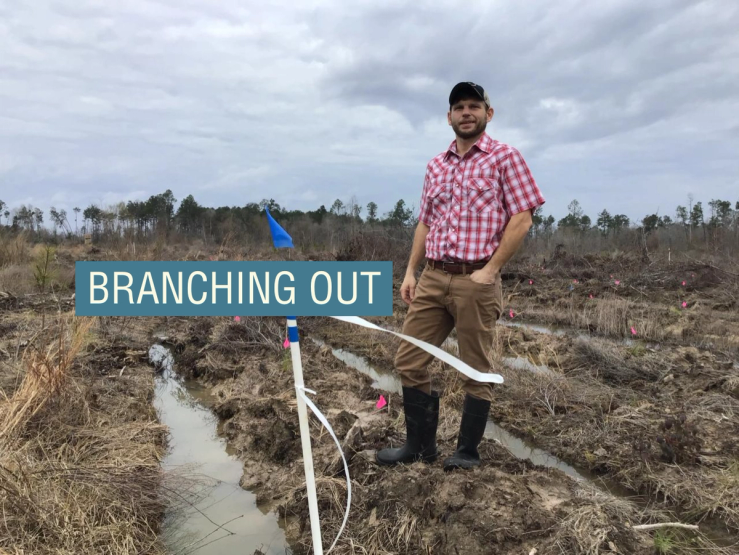The Scene
Outside the small town of Merryville, Louisiana, an experiment in a new kind of climate finance is taking root.
Qarlbo Biodiversity, a Swedish startup backed by hedge fund billionaire Conni Jonsson, said it has completed the first deal in the US to sell “biodiversity credits” from its 16-square-mile stand of pine trees. The area, close to the Texas border, is known for commercial timber plantations. Qarlbo replaced the fast-growing, high-value slash pines there with native longleaf pines, which today cover less than 5% of their original 90-million-acre habitat in the US. The trees, an endangered species themselves, also attract other threatened species like the red-cockaded woodpecker and make the area more resistant to wildfires. But they’re worth less as timber.
Biodiversity credits are meant as a way to monetize those benefits, and in selling the first tranche of them, Qarlbo CEO Aleksandra Holmlund said she hopes to prove that similar projects could be developed profitably at a much bigger scale worldwide: “We’re sending up a test balloon to see if this works, and it appears it does.”
In this article:
Tim’s view
Biodiversity credits are today where the carbon offset market was 30 years ago: An obscure frontier for a handful of risk-tolerant buyers, where the opportunities for growth and actual environmental benefits remain uncertain. Since 2022, somewhere between $325,000 and $1.9 million in biodiversity credits have been sold worldwide, according to the consulting firm Pollination (the wide range is due to a lack of price transparency; the Qarlbo deal also did not disclose a price).
But there are some key differences between monetizing biodiversity and monetizing carbon that have some experts skeptical about whether biodiversity can follow carbon into becoming a multi-trillion-dollar market.
The most obvious is the buyers’ baseline. With carbon, buyers typically aim to buy credits to match a certain number of tons of CO2 emissions in their carbon footprint. But if your aim is to offset some negative impact of your consumer choices or business operations on biodiversity, there’s no clear way to quantify that. And although there are plenty of scientifically rigorous ways to assess whether an ecosystem’s health is improving, it’s less obvious how to express that in a discrete unit like a ton of CO2. As a result, it’s difficult to have consistency between projects about what the price should be, said Camilo Trujillo, an expert on biodiversity credits at the International Emissions Trading Association, a nonprofit. And while some countries, including Australia and Colombia, are working on regulation to formalize the biodiversity credit market, there’s no jurisdiction that mandates their purchase the way the EU and others do for carbon.
All of which leads to a nagging question: Who is going to buy these things? Qarlbo’s Holmlund insisted that there’s little sense or value in thinking of biodiversity credits as “offsets” for harmful behavior. Some buyers, she said, may be interested in supporting projects because their company relies on a natural resource supply chain that is more valuable or dependable when biodiversity is high. For now, the Pollination report found that most early buyers were motivated by the chance to do some feel-good green marketing. That’s fine, but it won’t lead to any real scale.
The buyer in Qarlbo’s case — a timberland investment firm called 6M Properties — had a different view. Mark McMillan, its CEO, said he viewed the credits as a straightforward investment that will grow in value over time as more companies seek out biodiversity credits. It could be some time before that investment pays off; there’s currently no secondary market for trading biodiversity credits and advocates are divided on whether such trading would help grow the market or just feed rampant speculation. And, as someone who makes a living himself from timber management, McMillan wanted to help prove out the case that biodiversity credits could be a new way to get money from such properties in the face of mounting regulations, falling wood demand, and other headwinds. “The future of this industry lies in extracting value from every angle possible based on the property’s unique characteristics,” he said.
Mandatory biodiversity credit markets are likely on the horizon, Trujillo said, possibly in the same countries — including Australia, Colombia, India, and Finland — that are already developing regulations. And the global biodiversity summit in Cali last year saw the launch of several voluntary biodiversity accounting standards, which could help make global efforts more consistent.
But as the trade grows, it’s vital not to succumb to the same kinds of sleight-of-hand and sloppy accounting practices that led to widespread accusations of greenwashing in the carbon market, he said: “They don’t want to make the same mistakes.”
Room for Disagreement
The gap between current global funding for biodiversity efforts and what scientists believe is necessary to fully protect essential ecosystems is about $700 billion annually. By 2030, biodiversity credits will be able to cover no more than 1% of that gap, a Boston Consulting Group study argues: “At this stage, there are no regulations or incentives to drive corporates to buy biodiversity credits at volume.”
Notable
- Global forest loss hit a record high last year, driven primarily by wildfires and agriculture.


